2015 Yamaha SR400 First Ride Review
Yamaha re-imports its real-deal retro
Your giant corporations can be a little slow to respond to trends, but sometimes they surprise you. Yamaha started teasing the idea of bringing back its old SR400 a couple years ago, and now they’ve gone ahead and done it. This is not a modern interpretation of the old bike, this is the actual old bike it’s been building and selling in other markets since the ’70s – though it does have modern fuel injection and a charcoal canister to meet current emissions requirements.
2015 Yamaha SR400
| Engine | 15.0/20 |
| Suspension/Handling | 11.0/15 |
| Transmission/Clutch | 8.0/10 |
| Brakes | 8.0/10 |
| Instruments/Controls | 4.0/5 |
| Ergonomics/Comfort | 8.0/10 |
| Appearance/Quality | 8.0/10 |
| Desirability | 7.0/10 |
| Value | 7.5/10 |
| Overall Score | 76.5/100 |
In fact, it was the SR500 that was imported to the U.S. beginning in 1978 – a longer-stroke version of the 400cc model Yamaha’s been selling in Japan ever since, where tiered licensing keeps the 500 a 400. (Don’t be surprised to see a GYT-R 500 kit from Yamaha.) Speaking of hop-ups, a big motivation for re-importing the SR is that the old two-valve Yamaha thumper is in great demand among custom builders. A quick stop at Venice, California’s, Deus ex Machina outlet on the new SR yesterday raised quite a few hepcat eyebrows among the latte-sipping motorati, and the Deus guys asked us to feel free to crash as many new SRs as possible so as to provide donor motors ASAP – which are hard to come by in the U.S. In the ’70s, big Japanese four-cylinders were all the rage among us just-blossoming baby boomers.
Anyway, here the thing is, all 384 pounds of it, rolling on 18-inch wire wheels and tube-filled Bridgestone Battlax tires, for the low low price of $5,990. Yamaha’s people are throwing out phrases like mechanical honesty and elemental beauty to spin the SR, and they may be onto something. Honda’s CB500s fall into roughly the same price range and offer considerably more performance, but if you’re looking for something with no plastic, then welcome back to 1978. Aside from the charcoal canister, which really is hideous, the rest of the SR is real steel, from the tip of its chrome front fender to the back of the grab rail out back, and everything in between: gas tank, centerstand, helmet lock and petcock included. (The petcock feeds the electric fuel pump that feeds the EFI. You get a petcock and a low-fuel light. You can’t run out of gas.) The tank holds 3.2 gallons, and Yamaha says you can expect 66 mpg.
The 1970s are not a bad place to visit, really. In stock form, the thumper has enough stick to put the hurt on automotive traffic, and it will get you up to 80 mph escape velocity, maybe a little more, given a long-enough straight; short freeway hops are not out of the question. At 80 mph indicated and about 6000 rpm, there’s quite a bit of vibration reminding you of your authentic retro-ness through all contact points. Some people are sensitive to that, some don’t much mind. Despite the absence of a counterbalancer, the SR is still way smoother than some vintage Singles we’ve ridden, ones that feel like you’re holding a downed power cable. At 60-65 mph, the SR is quite serene.
The five-speed gearbox and chain final-drive get the job done efficiently and with little lash, and in general, you get the idea Yamaha has been making very nice motorcycles for many years. It has been. All controls work smoothly. Clutch pull is light, the front brake is one of the few things that did get upgraded, and it offers really good power and feel. The 35mm damper-rod fork strokes through 5.9 inches of travel; the rear shocks give you 4.1 inches of old-school low-tech preload-adjustable wheel travel, and none of it sucks in the least.
The funnest retro part is there’s no electric starter: you will kick the SR to life unless you happen to be parked downhill. I didn’t try a run-and-bump, but that could work too. Electronic fuel injection is humankind’s greatest invention in my lifetime, and even the lightweight lady in the group I was with had no trouble booting the SR to life. You do have to learn the drill with the compression release, but once you do, the 87mm piston doesn’t require a lot of persuasion, though it’s so quiet it can be hard to tell if it fired or not when you’re wearing earplugs. My bike usually started on the first kick. Don’t get me started about getting my old SRX-6 started. Let’s not discuss the XR400 mouldering outside my back door right now. By the time you get either of them kickstarted, you’re too tired to ride. Let’s change the subject.
The SR is a perfectly fun little bike to ride, especially on a gorgeous August afternoon on the SoCal coast, up through Santa Monica, onto PCH and right up into the twisty canyons in the Malibu mountains.
Takes you right back to the days when guys would use light bikes like the SR to give fits to bigger bikes with power they couldn’t use in the tight stuff. The SR’s not so fast on the way up the mountain, but it’s fun to wring its chicken neck, and it’s like a bicycle coming back down on its skinny little tires. In coastal towns where parking’s tough and the streets are crowded with aspiring actresses walking their dogs in between waitressing shifts, a cheap little bike like the SR is just the thing for coming over all casually cool, a nice little motorcycle that doesn’t call all the attention to itself and doesn’t mind sleeping on the street. Did Marlon Brando’s Triumph have an electric starter? Hell no.
I’d say, if you want one, there’s no good reason not to get one. The SR is a modernized slice of high-quality Japanese authentic motorcycle history, and they’re already in dealers if you can find one. Yamaha says it’s having to ramp up production to meet demand. Here’s to fun, cheap little bikes. And also to the other 12 models Yamaha says are on the way. Hooo!
+ Highs
- Kickstart-only will keep all but the inner circle from borrowing it
- It’s a skinny waif that will be forever indebted and loyal to you
- All the bugs were worked out like 20 years ago, not that there were any
– Sighs
- For $5990, we want the missing 100cc
- You’re going to spend another $6k on aftermarket crap for it
- Lately, there are a lot of really great bikes in the $6k range
2015 Yamaha SR400 Specifications | |
|---|---|
| MSRP | $5,990 (Liquid Graphite) Available from May 2014 |
| Engine Type | air-cooled SOHC, 2-valve |
| Displacement | 399cc |
| Bore x Stroke | 87.0 mm x 62.7mm |
| Compression Ratio | 8.5:1 |
| Fuel Delivery | Fuel Injection |
| Ignition | TCI: Transistor Controlled Ignition |
| Transmission | 5-speed; multiplate wet clutch |
| Final Drive | Chain |
| Suspension / Front | Telescopic; 5.9-in travel |
| Suspension / Rear | Swingarm; 4.1-in travel |
| Front Brakes | Hydraulic disc brake, 268mm |
| Rear Brakes | 150mm drum |
| Front Tire | 90/100-18M/C 54S |
| Rear Tires | 110/90-18M/C 61S |
| Length | 82.1” |
| Width | 29.5” |
| Height | 43.1” |
| Seat Height | 30.9” |
| Wheelbase | 55.5” |
| Rake (Caster Angle) | 27.7º |
| Trail | 4.4” |
| Fuel Capacity | 3.2 gal |
| Fuel Economy | 66.2 mpg (claimed) |
| Wet Weight | 384 lb (claimed) |
| Warranty | 1 Year (Limited Factory Warranty) |



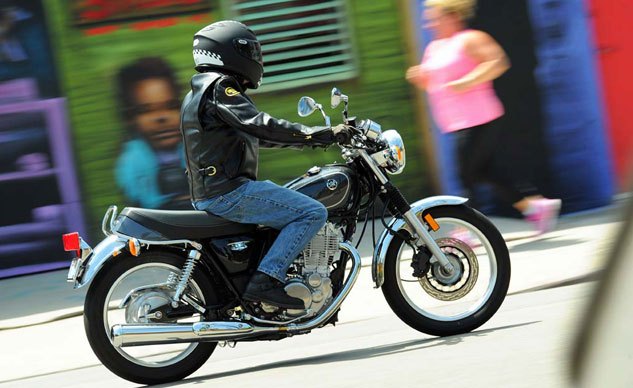
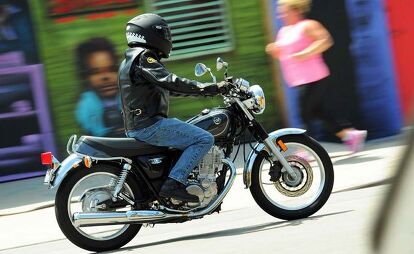






















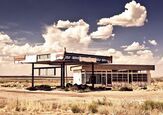

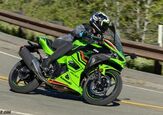



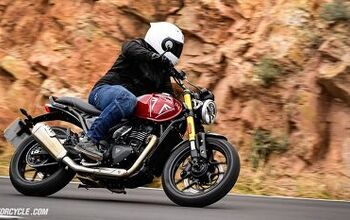
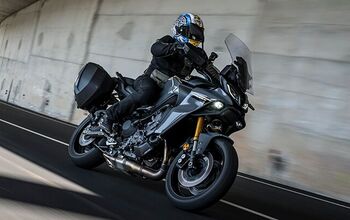
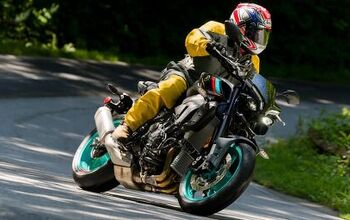
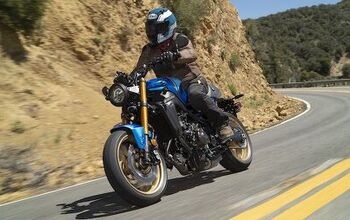
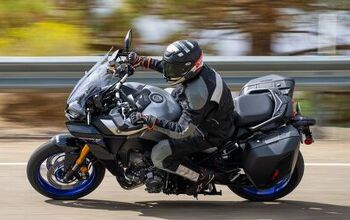
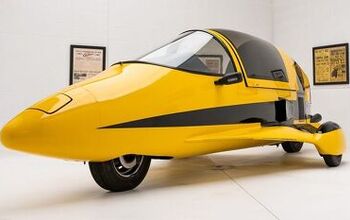
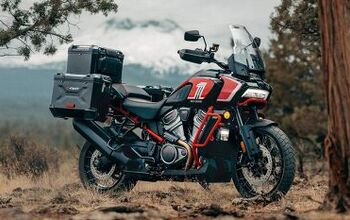
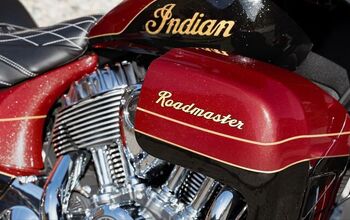
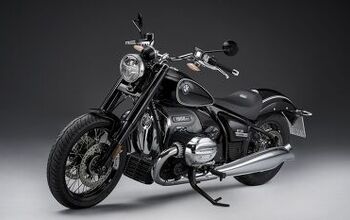
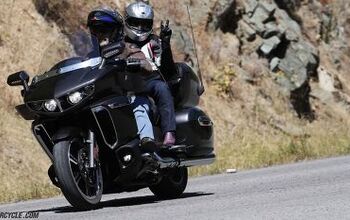
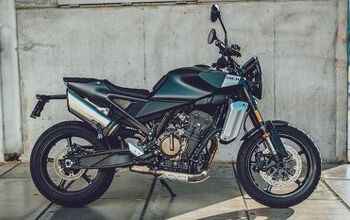
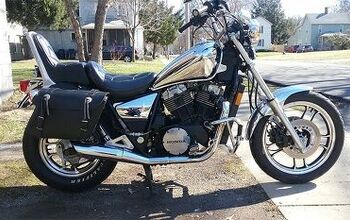


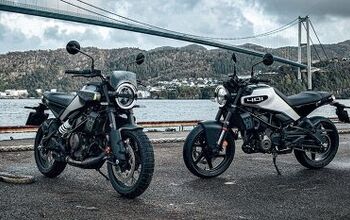
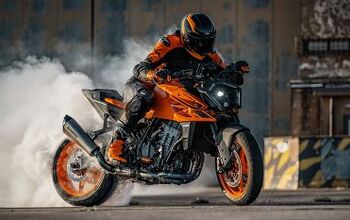
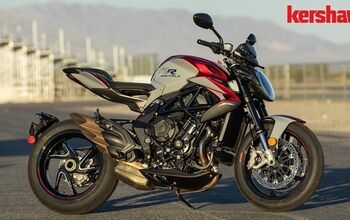
Comments
Join the conversation
The SR500 had an MSRP of $1,898 in 1980. Adjusted for inflation, the price now should be $5,500 according to a handy inflation calculator I found.
Seeing how it does have improvements to the brakes and FI, the $5,990 price seems relatively fair. My initial reaction was that the price is about $1,000 too high. The truth is our money really is worth a hell of a lot less than it used to be :(
I suppose the 400 engine size is a bummer, but if it runs smoother with the shorter stroke, it may be worth it. It is not like this bike is about speed and power anyway.
One passed my on the parkway (I15 in CT) this am. I was doing 65 and he flew past doing probably just over 70mph. From the back it looked tiny like a Honda 250 maybe smaller. Really nice looking but the rider looked over 6' and small for the bike.